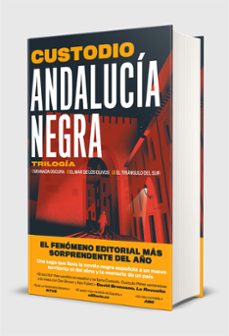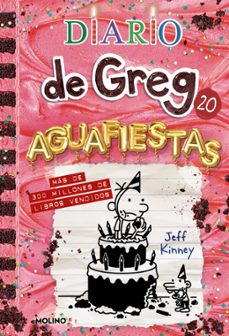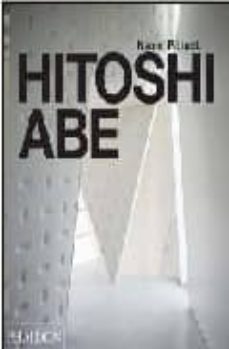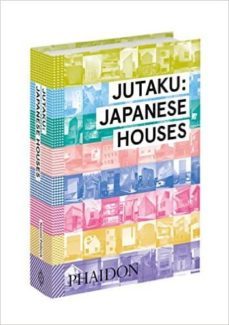Imprescindibles
Más vendidos Libros más leídos eBooks más leídos Todos los libros Todos los libros Autores destacados Series y sagas
Recomendados Libros recomendados Autores destacados Libros que inspiran Vidas con historia LGTBIQ+ English books
Ficción
Literatura Contemporánea Estudios literarios Clásicos Cuentos Poesía Teatro Libros de bolsillo Sagas literarias
Géneros literarios Novela romántica y erótica Novela negra Novela histórica Narrativa fantástica Novela de ciencia ficción Novela de terror Narrativa de humor Narrativa de viajes
No Ficción
Ciencias y tecnología Biología Ciencias Ciencias naturales Divulgación científica Informática Ingeniería Matemáticas Medicina Salud y dietas Formación Idiomas Estilo de vida Libros de Cocina Guías de viaje Narrativa de viajes Deportes Libros de Juegos Manualidades
Humanidades Autoayuda y espiritualidad Ciencias humanas Derecho Economía y Empresa Psicología y Pedagogía Filosofía Sociología Filología Biblioteconomía Estudios filológicos Estudios lingüísticos Estudios literarios Historia y crítica de la Literatura
Infantil
Juvenil
#Jóvenes lectores Narrativa juvenil Clásicos adaptados Libros Wattpad Libros Booktok Libros de influencers Libros de Youtubers Libros Spicy Juveniles Libros LGTBIQ+ Temas sociales Libros ciencia ficción Libros de acción y aventura Cómic y Manga Juvenil Cómic Juvenil Manga Shonen Manga Shojo Autores destacados Jennifer L. Armentrout Eloy Moreno Nerea Llanes Hannah Nicole Maehrer
Libros de fantasía Cozy Fantasy Dark academia Hadas y Fae Romantasy Royal Fantasy Urban Fantasy Vampiros y hombres lobo Otros Misterio y terror Cozy mistery Policiaca Spooky Terror Thriller y suspense Otros
Libros románticos y de amor Dark Romance Clean Romance Cowboy Romance Mafia y amor Romance dramatico Romance dramatico Romcom Sport Romance Otros Clichés Enemies to Lovers Friends to Lovers Hermanastros Slow Burn Fake Dating Triángulo amoroso
Cómic y Manga
Novela gráfica Novela gráfica americana Novela gráfica europea Novela gráfica de otros países Personajes, series y sagas Series y sagas Star Wars Superhéroes Cómics DC Cómics Marvel Cómics otros superhéroes Cómics Valiant
eBooks
Literatura Contemporánea Narrativa fantástica Novela de ciencia ficción Novela de terror Novela histórica Novela negra Novela romántica y erótica Juvenil Más de 13 años Más de 15 años Infantil eBooks infantiles
Humanidades Autoayuda y espiritualidad Ciencias humanas Economía y Empresa Psicología y Pedagogía Filosofía Historia Historia de España Historia Universal Arte Cine Música Historia del arte
Ciencia y tecnología Ciencias naturales Divulgación científica Medicina Salud y dietas Filología Estudios lingüísticos Estudios literarios Historia y crítica de la Literatura Estilo de vida Cocina Guías de viaje Ocio y deportes
NAOMI POLLOCK
Recibe novedades de NAOMI POLLOCK directamente en tu email
Filtros
Del 1 al 4 de 4
PHAIDON PRESS LIMITED 9780714870687
"La primera monografía sobre el arquitecto japonés más innovador visionario del momento. Sou Fujimoto nació en Hokkaido, estudió arquitectura en Tokyo y creó su propio estudio en el año 200
Ver más
Otros
PHAIDON PRESS LIMITED 9780714845548
Modern Japanese House A survey of the most innovative new houses built in Japan.Naomi Pollock A survey of over 20 of the most innovative new houses built over the last decade in Japan, a country recognized worldwide for its innovative design Features internationally prominent architects such as Shigeru Ban and Kazuyo Sejima as well as up-and-coming practitioners Inspiring selection and accessible project descriptions make the volume appealing to architects and the general public alike A subject of endless fascination Modern Japanese House provides an extensive overview of contemporary residential architecture in a country that is known worldwide for its design innovation. The volume covers an array of projects from the past decade, featuring both established and emerging architects in a meticulous survey of real homes across Japan. Modelled on the format of Modern House, Modern House 2, and Modern House Three , Modern Japanese House is an overview of recent domestic design trends in Japan and features a highly colourful combination of projects from a variety of architects, both known and new to the international architecture scene. The projects are divided into five chapters - 'Tiny Houses', 'Inside/ Outside', 'Multi Generation Houses', 'Work/Play' and 'Vacation Houses' - that reflect the issues particular to residential design in Japan. Architects featured include such familiar figures as Kazuyo Sejima, Jun Aoki, Shigeru Ban, Hitoshi Abe and Shuhei Endo, as well as lesser known practitioners such as Nobuaki Furuya and Hiroshii Nakao, among others.
Ver más
Tapa dura
PHAIDON PRESS LIMITED 9780714846651
The first comprehensive monograph on the internationally renowned Japanese architect The first comprehensive monograph on the work of Hitoshi Abe (b.1962), one of the most interesting of Japan's new generation of architects Abe's architecture is internationally renowned for its structural innovation and spatial complexity, and in 2007 he was appointed Professor and Chair of the Department of Architecture and Urban Design at the University of California, Los Angeles Includes all Abe's major works from the 1990s to the present, including the Miyagi Stadium, Rifu (2000), Reihoku Community Hall (2002) - for which he won the Architectural Institute of Japan Award in 2003 - and the Kanno Museum, Shiogama (2006) Every project is illustrated with a wealth of interior and exterior photographs, as well as drawings by the architect and computer renderings Explores Abe's distinctive aesthetic in detail, which combines an emphasis on everyday use with innovative engineering solutions
Ver más
Tapa dura
PHAIDON PRESS LIMITED 9780714869629
Quirky, surprising and entertaining - with more than 400 houses, Jutaku is architecture at the speed of Japan. Frenetic. Pulsating. Disorienting. Japan's contemporary culture is constantly in flux. In stark contrast to the centuries old imperial architecture of Kyoto, recent Japanese architectural practices have ushered in an era of continuous experimentation. With 500 houses, one house per page, one image per house, Jutaku: Japanese Houses is a fast-paced, "quick hit" shock to the system that shines a Harajuku-bright neon light on the sheer volume, variety and novelty of contemporary Japanese residential architecture. Featuring the work of many of Japan's most famous architects including Shigeru Ban, Sou Fujimoto, Toyo Ito, Kengo Kuma, Jun Igarishi, Shuhei Endo and dozens of up and coming and completely unknown young architects, Jutaku is organized geographically taking readers on a bullet train journey across Japan's architectural landscape. Essential reading for architects, designers and fans of contemporary Japanese culture.
Ver más
Tapa dura
Del 1 al 4 de 4






























